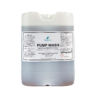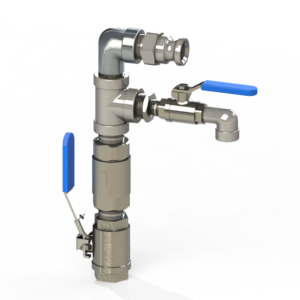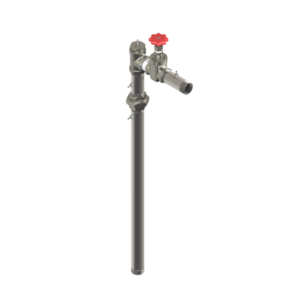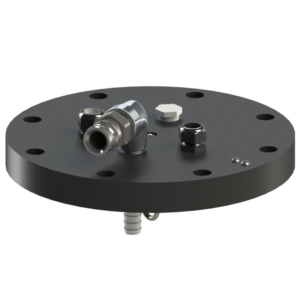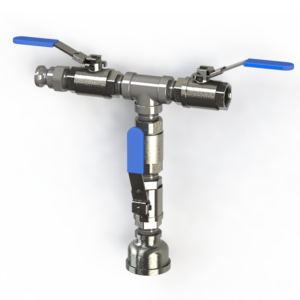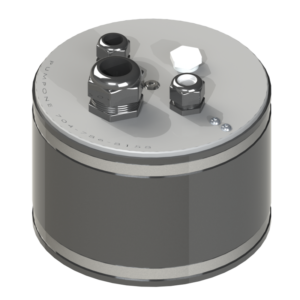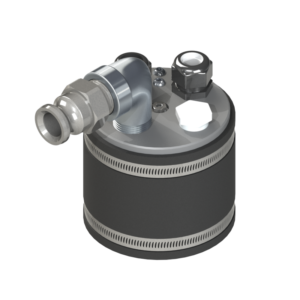SAFETY
1. IDENTIFICATION
Product Identifier
Product Name: PUMP WASH- High Alkaline Cleane
Other means of identification
SDS #: POE-016
Product Code: 1375
UN/ID No: UN1760
Recommended use of the chemical and restrictions on use
Recommended Use: Alkaline cleaner.
Details of the supplier of the safety data sheet
Supplier Address:
PUMPONE ENVIRONMENTAL, L.L.C.
41 ODELL SCHOOL ROAD
SUITE H
CONCORD, NC 28027
Emergency Telephone Number
Company Phone Number: (704) 786-8158
Emergency Telephone: (24 hr) (704) 786-8158 (During normal business hours – Mon-Fri – 8am to 5pm)
2. HAZARDS IDENTIFICATION
Appearance – Clear amber liquid Physical State – Liquid Odor – None
Classification
Skin corrosion/irritation: Category 1 Sub-category B
Serious eye damage/eye irritation: Category 1
Signal Word
Danger
Hazard Statements
Causes severe skin burns and eye damage
Pump Wash – High Alkaline Cleaner Revision Date 30 MAY 2015
Precautionary Statements – Prevention
Do not breathe dust/fume/gas/mist/vapors/spray
Wash face, hands and any exposed skin thoroughly after handling
Wear protective gloves/protective clothing/eye protection/face protection
Precautionary Statements – Response
Immediately call a poison center or doctor/physician
IF IN EYES: Rinse cautiously with water for several minutes. Remove contact lenses, if present and easy to do. Continue rinsing
Immediately call a poison center or doctor/physician
IF ON SKIN (or hair): Remove/Take off immediately all contaminated clothing. Rinse skin with water/shower
Wash contaminated clothing before reuse
IF INHALED: Remove victim to fresh air and keep at rest in a position comfortable for breathing
Immediately call a poison center or doctor/physician
IF SWALLOWED: rinse mouth. Do NOT induce vomiting
Precautionary Statements – Storage
Store locked up
Precautionary Statements – Disposal
Dispose of contents/container to an approved waste disposal plant
3. COMPOSITION/INFORMATION ON INGREDIENTS
Chemical Name
Sodium hydroxide
CAS No
1310-73-2
Weight-%
15-25
Chemical Name
Proprietary
CAS No
Proprietary
Weight-%
<5
**If Chemical Name/CAS No is “proprietary” and/or Weight-% is listed as a range, the specific chemical identity and/or percentage
of composition has been withheld as a trade secret.**
4. FIRST-AID MEASURES
First Aid Measures
Eye Contact – Rinse immediately with plenty of water, also under the eyelids, for at least 15 minutes. Immediately call a poison center or doctor/physician.
Skin Contact – IF ON SKIN (or hair): Remove/Take off immediately all contaminated clothing. Rinse skin with water/shower. Wash contaminated clothing before reuse. If skin irritation persists, call a physician.
Inhalation – Remove to fresh air. If breathing is difficult, give oxygen. Call a physician or poison control
center immediately.
Ingestion – Do not induce vomiting. Rinse mouth. Dilute with milk or water. Never give anything by mouth to an unconscious person. Get medical attention if necessary.
Most important symptoms and effects
Symptoms – Causes severe skin burns and eye damage.
Indication of any immediate medical attention and special treatment needed
Notes to Physician – Treat symptomatically
5. FIRE-FIGHTING MEASURES
Suitable Extuinguishing Media
Use extinguishing measures that are appropriate to local circumstances and the surrounding environment.
Unsuitable Extinguishing Media – not determined
Specific Hazards Arising from the Chemical
Corrosive material. Concentrated product can react with aluminum, zinc, and magnesium to release hydrogen gas, which can form explosive mixtures.
Protective equipment and precautions for firefighters
As in any fire, wear self-contained breathing apparatus pressure-demand, MSHA/NIOSH (approved or equivalent) and full
protective gear.
6. ACCIDENTAL RELEASE MEASURES
Personal precautions, protective equipment and emergency procedures
Personal Precautions – Refer to protective measures listed in sections 7 and 8.
Environmental Precautions – Prevent from entering into soil, ditches, sewers, waterways and/or groundwater. See
Section 12, Ecological Information. See Section 13: DISPOSAL CONSIDERATIONS.
Methods and material for containment and cleaning up
Methods for Containment – Prevent further leakage or spillage if safe to do so.
Methods for Clean-Up – Absorb with inert material, and then place in suitable container for chemical waste.
7. HANDLING AND STORAGE
Precautions for safe handling
Advice on Safe Handling – Handle in accordance with good industrial hygiene and safety practice. Use personal
protection recommended in Section 8. Do not breathe dust/fume/gas/mist/vapors/spray.
Wash face, hands and any exposed skin thoroughly after handling. Avoid contact with skin,
eyes or clothing.
Conditions for safe storage, including any incompatibilities
Storage Conditions – Keep containers tightly closed in a dry, cool and well-ventilated place. Keep locked up and
out of reach of children. Store at ambient conditions. Store locked up. Store away from
incompatible materials. Protect from excessive heat.
Incompatible Materials – Acids. Non-ferrous metals. Aluminum, magnesium, and their alloys.
8. EXPOSURE CONTROLS/PERSONAL PROTECTION
Exposure Guidelines
Chemical Name
Sodium hydroxide
1310-73-2
ACGIH TLV
Ceiling: 2 mg/m³
OSHA PEL
TWA: 2 mg/m³
(vacated) Ceiling: 2 mg/m³
NIOSH IDLH
IDLH: 10 mg/m³
Ceiling: 2 mg/m³
Appropriate engineering controls
Engineering Controls – Ensure adequate ventilation, especially in confined areas. Eyewash stations. Showers.
Individual protection measures, such as personal protective equipment
Eye/Face Protection – Chemical splash goggles.
Skin and Body Protection – Wear suitable protective clothing. Wear neoprene gloves.
Respiratory Protection – Ensure adequate ventilation, especially in confined areas. In case of inadequate ventilation
wear respiratory protection.
General Hygiene Considerations – Handle in accordance with good industrial hygiene and safety practice. Wash face, hands
and any exposed skin thoroughly after handling.
9. PHYSICAL AND CHEMICAL PROPERTIES
Information on basic physical and chemical properties
Physical State – Liquid
Appearance – Clear amber liquid
Odor – None
Color – Clear amber
Odor Threshold – Not determined
| PROPERTY | VALUES | REMARKS / METHOD |
|---|---|---|
| pH | 14.0 | |
| Melting Point/Freezing Point | -6 °C / 20 °F | |
| Boiling Point/Boiling Range | 100-104 °C / 212-220 °F | IBP |
| Flash Point | None | |
| Evaporation Rate | Not determined | |
| Flammability (Solid, Gas) | Liquid - not applicable | |
| Upper Flammability Limits | Not determined | |
| Lower Flammability Limit | Not determined | |
| Vapor Pressure | Not determined | |
| Vapor Density | >1 | (Air=1) |
| Specific Gravity | 1.200 | |
| Water Solubility | Completely soluble | |
| Solubility in other solvents | Not determined | |
| Partition Coefficient | Not determined | |
| Auto-ignition Temperature | Not determined | |
| Decomposition Temperature | Not determined | |
| Kinematic Viscosity | Not determined | |
| Dynamic Viscosity | 100 cps | |
| Explosive Properties | Not determined | |
| Oxidizing Properties | Not determined | |
| VOC Content | None |
10. STABILITY AND REACTIVITY
Reactivity
Not reactive under normal conditions.
Possibility of Hazardous Reactions
None under normal processing.
Hazardous Polymerization
Hazardous polymerization does not occur.
Conditions to Avoid
Keep out of reach of children. Contact with incompatible materials.
Incompatible Materials
Acids. Non-ferrous metals. Aluminum, magnesium, and their alloys.
Hazardous Decomposition Products
None known based on information supplied.
11. TOXICOLOGICAL INFORMATION
Information on likely routes of exposure
Product Information
Eye Contact – Causes severe eye damage.
Skin Contact – Causes severe skin burns.
Inhalation – Avoid breathing vapors or mists.
Ingestion – Do not ingest.
Component Information
Chemical Name
Sodium hydroxide
1310-73-2
Oral LD50
–
Dermal LD50
= 1350 mg/kg ( Rabbit )
Inhalation LC50
–
Information on physical, chemical and toxicological effects
Symptoms – Please see section 4 of this SDS for symptoms.
Delayed and immediate effects as well as chronic effects from short and long-term exposure
Carcinogenicity – Based on the information provided, this product does not contain any carcinogens or
potential carcinogens as listed by OSHA, IARC or NTP.
Numerical measures of toxicity
Not determined
12. ECOLOGICAL INFORMATION
Ecotoxicity
The product is not classified as environmentally hazardous. However, this does not exclude the possibility that large or frequent spills can have a harmful or damaging effect on the environment.
Component Information
Chemical Name
Sodium hydroxide
1310-73-2
Algae/aquatic plants
–
Fish
45.4: 96 h Oncorhynchus
mykiss mg/L LC50 static
Toxicity to microorganisms
–
Crustacea
–
Persistence/Degradability
Not determined.
Bioaccumulation
Not determined.
Mobility
Not determined
Other Adverse Effects
Not determined
13. DISPOSAL CONSIDERATIONS
Waste Treatment Methods
Disposal of Wastes – Disposal should be in accordance with applicable regional, national and local laws and regulations.
Contaminated Packaging – Disposal should be in accordance with applicable regional, national and local laws and regulations.
California Hazardous Waste Status
Chemical Name
Sodium hydroxide
1310-73-2
California Hazardous Waste Status
Toxic
Corrosive
14. TRANSPORT INFORMATION
Note Please see current shipping paper for most up to date shipping information, including exemptions and special circumstances.
DOT
UN/ID No – UN1760
Proper Shipping Name – Corrosive liquid, n.o.s. (Sodium hydroxide)
Hazard Class – 8
Packing Group – II
IATA
UN/ID No – UN1760
Proper Shipping Name – Corrosive liquid, n.o.s. (Sodium hydroxide)
Hazard Class – 8
Packing Group – II
IMDG
UN/ID No – UN1760
Proper Shipping Name – Corrosive liquid, n.o.s. (Sodium hydroxide)
Hazard Class – 8
Packing Group – II
15. REGULATORY INFORMATION
International Inventories
| Chemical Name | TSCA | DSL | NDSL | EINECS | ELINCS | ENCS | IECSC | KECL | PICCS | AICS |
|---|---|---|---|---|---|---|---|---|---|---|
| Sodium hydroxide | Present | X | Present | Present | X | Present | X | X | ||
| Proprietary | Present | X | X | Present | X | X |
Legend:
TSCA – United States Toxic Substances Control Act Section 8(b) Inventory
DSL/NDSL – Canadian Domestic Substances List/Non-Domestic Substances List
EINECS/ELINCS – European Inventory of Existing Chemical Substances/European List of Notified Chemical Substances
ENCS – Japan Existing and New Chemical Substances
IECSC – China Inventory of Existing Chemical Substances
KECL – Korean Existing and Evaluated Chemical Substances
PICCS – Philippines Inventory of Chemicals and Chemical Substances
AICS – Australian Inventory of Chemical Substances
US Federal Regulations
CERCLA
Chemical Name
Sodium hydroxide
1310-73-2
Hazardous Substances RQs
1000 lb
CERCLA/SARA RQ
Reportable Quantity (RQ)
RQ 1000 lb final RQ
RQ 454 kg final RQ
SARA 311/312 Hazard Categories
This material, as supplied, does not contain any substances subject to the requirements of SARA Sections 311/312 (40 CFR 370)
SARA 313
Not determined
CWA (Clean Water Act)
Chemical Name
Sodium hydroxide
CWA – Reportable Quantities
1000 lb
CWA – Toxic Pollutants
–
CWA – Priority Pollutants
–
CWA – Hazardous Substances
X
US State Regulations
California Proposition 65
This product does not contain any Proposition 65 chemicals.
U.S. State Right-to-Know Regulations
Chemical Name
Sodium hydroxide 1310-73-2
New Jersey
X
Massachusetts
X
Pennsylvania
X
16. OTHER INFORMATION
NFPA
Health Hazards
3
Flammability
0
Instability
1
Special Hazards
Cor
HMIS
Health Hazards
3
Flammability
0
Physical Hazards
1
Personal Protection
C
Issue Date: 20-Jan-2004
Revision Date: 30 MAY 2015
Revision Note: New SDS format
Disclaimer
The information provided in this Safety Data Sheet is correct to the best of our knowledge, information and belief at the
date of its publication. The information given is designed only as a guidance for safe handling, use, processing, storage,
transportation, disposal and release and is not to be considered a warranty or quality specification. The information
relates only to the specific material designated and may not be valid for such material used in combination with any other
materials or in any process, unless specified in the text.

